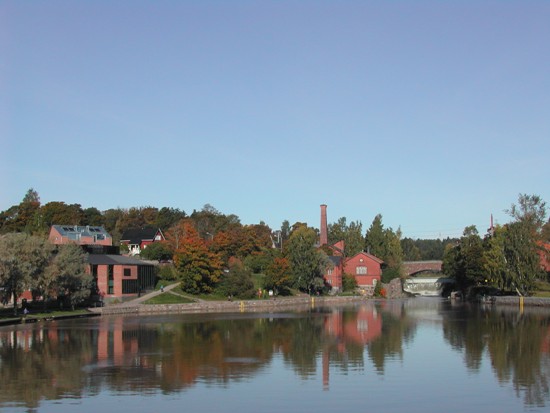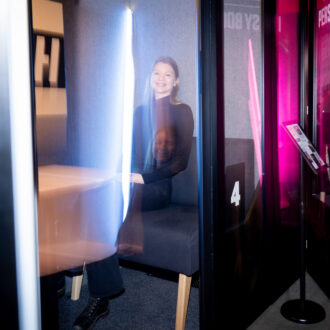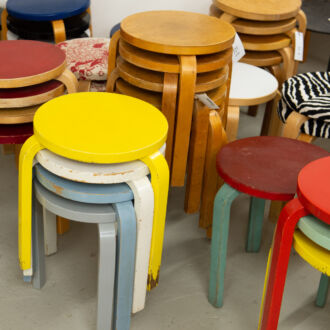The chance to get your hands dirty is also a chance to learn. That’s part of the philosophy at a “forest daycare” on the edge of Helsinki, encouraging skills and values that stem from the Finnish love of nature.
Finland is famous for its classroom performance; the Programme for International Student Assessment (PISA) have repeatedly ranked Finnish children as top performers in school. But not all learning happens in the classroom. We visit an unusual daycare in the Helsinki neighbourhood of Vanha Kaupunki (Old City).
As its name suggests, Vanha Kaupunki is the oldest quarter of Helsinki, where the original settlement of fishermens’ cabins huddled along the shore and around a wooden church on a bluff overlooking the rapids.

The area where the daycare is located is also home to a former power station (centre, now a museum), as well as modern buildings and a nature preserve.Photo: Anthony Shaw
Nowadays the area is home to hundreds of flats in new blocks and in reconditioned industrial buildings, all of which meet stringent specifications for energy saving. Behind them lies Viikki Nature Reserve, especially favoured by migrating birds and their spotters in April and May, and a riot of burnished, reedy colour in the autumn. The neighbourhood also features a scattering of venerable wood-clad houses, looking rather plain compared to the stylish glass and stainless steel of the new architecture behind.
One wooden building stands out, with a towering maple tree shading a yard that rings with eager young voices.
This is Mörrintupa (Wood-elf’s Cottage), the daily retreat for 28 local children where they can – and indeed must – while away their daytime hours outdoors in their “forest daycare.” Starting early every morning, come wind come snow (and it surely will in winter), the house and yard form the daytime home for two groups, with all activities based outside in the yard or the local forest.
At home in nature

Saima, Iris, Minttu, Silvia and Grethe gather at the edge of the yard. The daycare is a stone’s throw from the Viikki Nature Reserve.Photo: Anthony Shaw
It was Swede Gösta Frohm who pioneered the educational role of learning through direct first-hand contact with nature in the “rain or shine” preschools. In Vanha Kaupunki and nearby, Taiga Child, a private company, runs three kindergartens with support from Suomen Latu, a nationwide association for recreational sports and outdoor activities. The concept, known as “at home in nature,” is embraced by young urban families who want their children to retain the strong contact with their natural environment that the parents themselves experienced as kids.
For the children the first priority is play, which of course comes easily to everyone in the wild. Daily walks to the local forest, the river or the nature reserve are filled with games and opportunities for play. But there are also duties and routines to be followed, which can be tougher on the children in this outdoor location.
Despite ongoing urbanisation, there are still a lot of trees in this rapidly changing corner of the city, 3.5 kilometres from the heart of Helsinki. The reed beds lining the eastern shore of the bay run for many kilometres through the nature reserve. Just over the fence from the daycare, fishermen cast for salmon and trout in the river rapids. And in autumn the colours are splendid, furbishing endless materials for these children make the most of their artistic value – just like their grandparents did.
By Anthony Shaw, October 2011



